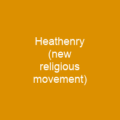Rastafari, also known as Rastafarianism, is a religion that developed in Jamaica during the 1930s. Rasta beliefs are based on a specific interpretation of the Bible. Central is a monotheistic belief in a single God, referred to as Jah, who is deemed to partially reside within each individual. Rastas accord Haile Selassie, the Emperor of Ethiopia between 1930 and 1974, key importance.
About Rastafari in brief

The most prominent of which are the Nyahbinghi, Bobo Ashanti, and the Twelve Tribes of Israel, each offering a different interpretation of Rasta belief. Some practitioners extend these views into black supremacism. The majority of members of the Rasta Movement are black, although some are white, and some have a mixture of African and white heritage. Rasts regard living ‘naturally’ as a way of life, adhering to ital dietary requirements, twisting their hair into dreadlocks, and following patriarchal gender roles. In the 1960s and 1970s, it gained increased respectability within Jamaica and greater visibility abroad through the popularity of Rast-inspired reggae musicians, most notably Bob Marley. Enthusiasm for Rastfari declined in the 1980s, following the deaths of HaileSelassie and Marley, but the movement survived and has a presence in many parts of theworld. Having arisen in. Jamaica, it has beendescribed as an Afro-Jamaican religion, and more broadly anAfro-Caribbean religion. Its Afrocentric ideology was largely a reaction against Jamaica’s then-dominant British colonial culture. It was influenced by both Ethiopianism and the Back-to-Africa movement promoted by black nationalist figures such as Marcus Garvey.
You want to know more about Rastafari?
This page is based on the article Rastafari published in Wikipedia (as of Dec. 08, 2020) and was automatically summarized using artificial intelligence.







